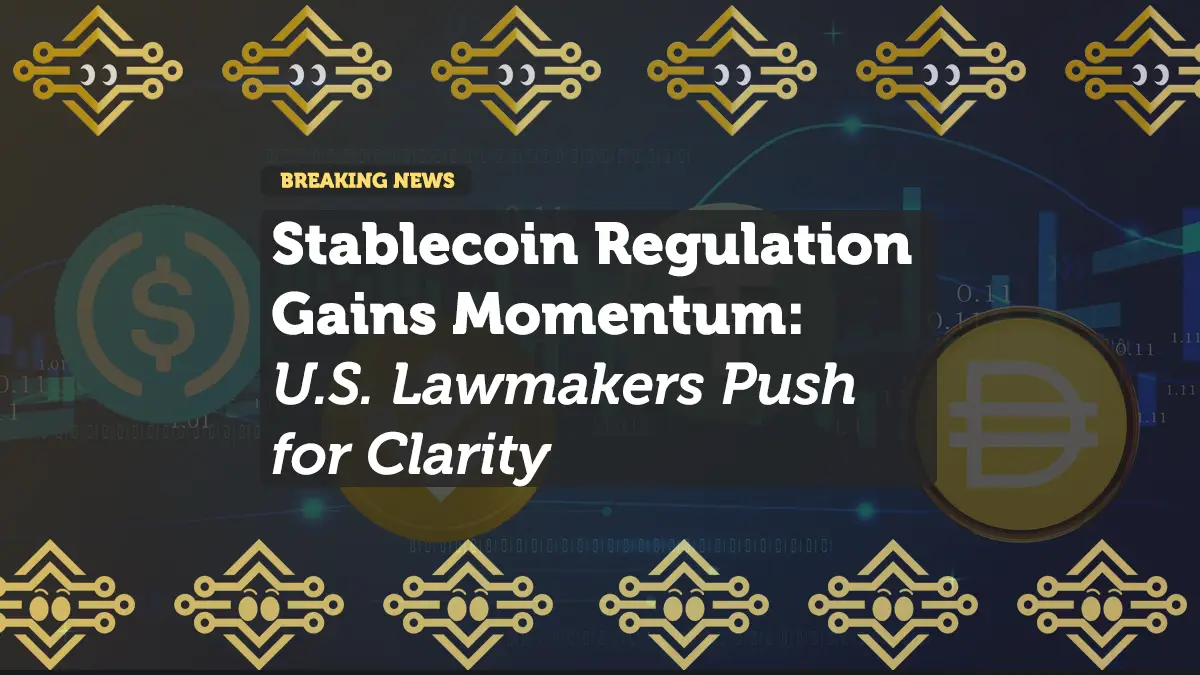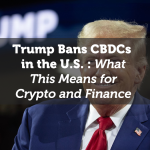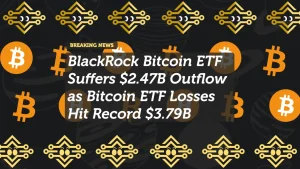
Stablecoin Regulation Gains Momentum: U.S. Lawmakers Push for Clarity
The U.S. is finally making stablecoin regulation a legislative priority, with Senate Banking Committee Chairman Tim Scott leading efforts to establish clear rules for issuers, reserves, and consumer protections. This bipartisan push aims to legitimize stablecoins, integrating them into the financial system while addressing risks like de-pegging events and transparency concerns.
As stablecoins become a cornerstone of digital finance, their regulation could reshape crypto markets, attract institutional adoption, and influence global policy. But will these laws protect innovation or stifle the industry? Let’s break down what’s at stake.
Why Regulate Stablecoins? The Current Landscape
1. The Role of Stablecoins in Crypto and Finance
Stablecoins serve as a bridge between traditional finance and crypto, offering price stability while enabling:
✅ DeFi transactions and lending protocols
✅ Cross-border payments with minimal fees
✅ On-ramps for institutional investors into crypto markets
✅ Hedging against volatility for traders and businesses
Top stablecoins include:
- Tether (USDT) – The largest stablecoin, with a market cap exceeding $90 billion
- USD Coin (USDC) – Known for regulatory compliance and transparency
- Binance USD (BUSD) – Previously regulated but faced restrictions under SEC scrutiny
Despite their growing adoption, stablecoins have operated in a regulatory gray area, raising concerns about:
- Reserve backing and transparency – Are they truly 1:1 backed?
- De-pegging risks – Events like Terra’s UST collapse in 2022 shook market confidence
- Systemic financial risks – Could an unstable stablecoin impact global markets?
2. The Push for Stablecoin Regulation
- Tim Scott, alongside Senator Cynthia Lummis and Representative Patrick McHenry, is leading efforts to introduce a Stablecoin Bill.
- The goal is to protect consumers, enhance transparency, and integrate stablecoins into the regulated financial system.
- The bill has bipartisan support, reflecting growing consensus on the need for clear legal frameworks.
Key Provisions in the Stablecoin Bill
1. Oversight of Stablecoin Issuers
- Issuers like Tether (USDT) and Circle (USDC) would be subject to federal regulation.
- Oversight may be given to the Federal Reserve or the Office of the Comptroller of the Currency (OCC).
- Only entities with verifiable, fully-backed reserves could operate legally in the U.S.
2. Reserve Requirements and Transparency
- Stablecoins must maintain 1:1 backing with cash or cash-equivalent assets.
- Regular audits and public disclosure of reserves will be mandatory.
- The bill seeks to prevent fractional reserve stablecoins, where issuers do not hold enough assets to cover all circulating tokens.
3. Consumer Protections
- Clear redemption rights will ensure users can always redeem stablecoins for fiat.
- Stablecoin de-pegging protections may be introduced to prevent major collapses like Terra’s UST.
4. Interoperability Standards
- Stablecoins may be required to work seamlessly across different blockchains and financial systems.
- The goal is to create uniform industry standards, making stablecoins safer and easier to use.
How Regulation Could Impact the Crypto Market
1. Increased Market Stability
- Regulation could eliminate risky or unbacked stablecoins, increasing trust in the system.
- More institutional investors may enter the space, boosting liquidity and adoption.
2. Innovation vs. Overregulation
- Some in the crypto industry worry that strict regulations could stifle DeFi and stablecoin innovation.
- A balance is needed to protect consumers while allowing innovation to thrive.
3. U.S. Leadership in Global Crypto Regulation
- The U.S. is competing with Europe and China in shaping global stablecoin rules.
- A well-designed U.S. framework could set the global standard for stablecoin regulation.
Challenges and Opposition
1. Balancing Regulation and Innovation
- Overly strict rules could limit competition and favor existing financial giants.
- Too little oversight could lead to another Terra-like collapse.
2. Global Coordination Issues
- The EU, China, and other nations are crafting their own stablecoin regulations.
- If U.S. rules conflict with global frameworks, international adoption could become fragmented.
3. Industry Resistance
- Some crypto companies want minimal regulation, fearing that stablecoin controls could extend to the broader crypto industry.
- There’s debate over whether central banks should issue their own digital currencies (CBDCs) instead of allowing private stablecoins to dominate.
Recent Developments and What Comes Next
1. House Financial Services Committee Hearings
- Lawmakers have held hearings with industry leaders and regulators, discussing stablecoin risks and potential rules.
2. Trump Administration’s Support for Stablecoins
- David Sacks, a key figure in Trump’s crypto policy, has signaled that stablecoins will be part of America’s digital asset strategy.
- The administration sees stablecoins as a tool for financial innovation but wants proper safeguards in place.
3. Market Response
- Crypto markets have responded positively to regulatory discussions, seeing them as a step toward mainstream adoption.
- Stablecoin volumes and market caps are reacting to legislative news, with investors assessing how new rules will impact issuers.
Final Thoughts: A Defining Moment for Stablecoin Regulation
The push for stablecoin regulation represents a major shift in U.S. financial policy toward integrating digital assets into the broader economy. While the bill aims to ensure transparency and consumer protection, its success will depend on balancing innovation with compliance.
Key Takeaways:
- Bipartisan support is growing for stablecoin regulation, with oversight, transparency, and security at its core.
- The bill could stabilize markets, making stablecoins safer and more appealing to institutional investors.
- Too much regulation could stifle innovation, while too little could lead to future financial instability.
- The U.S. is positioning itself as a global leader in stablecoin policy, influencing how other nations regulate digital assets.
With stablecoins becoming a key part of digital finance, the coming months will be crucial for shaping their future role in the economy. Whether this regulation strengthens or limits the crypto industry will depend on how the final bill is structured.
















